Welcome to the Redbird Review.
The Cardinals are down to 39 games on their schedule, and it’s time to stop fooling around. A wild-card ticket is in reach. Make your move, boys.
The front office can’t help you now. The coaches are what they are. Manager Mike Shildt will be Full Shildty: sunshine, blue skies, happy talk, slow to make adjustments.
So really, it’s up to the players. With the Cardinals (63-60 preparing to play ball in a two-game series with visiting Detroit, here are the guys to keep an eye on:
1. NOLAN ARENADO
With two games remaining on an eight-game homestand, Arenado is 3 for 26 with 11 strikeouts. But there is more to it than that.
Arenado’s home-road splits are notable. This season at Busch Stadium this season he’s batting .237 with a .298 onbase percentage and .440 slug for a .738 OPS. On the road Arenado has a .277 average with a .332 OBP and .550 slug for a .887 OPS. Using park-adjusted runs created, he’s performing at the league average offensively at home, but is 30 percent above league average on the road.
Righthanded pitchers are giving Arenado problems this season, home and away. In park-adjusted runs created Arenado is performing five percent above the league average offensively vs. RH pitching. He’s 55 percent above league average vs. LH pitching.
Or if you prefer more conventional numbers: .247 average and .771 OPS vs. RH pitchers, and .299 with a .976 OPS vs. LHP.
And finally: In 209 plate appearances vs. RH pitching at Busch Stadium this season Arenado is batting .218 with a .287 OBP and .404 slug for a .691 OPS. Not good.
2. ALEX REYES
Let’s face it, the big fella could give up three runs in every appearance and Shildt would stick with him as the closer. Reason: it’s baseball managing in 2021. The Closer must close. No one else can close, unless the official closer needs a day off. (But that doesn’t always stop Shildty from using Reyes, anyway.) And as a manager/leader, we certainly wouldn’t want to hurt anyone’s feelings, right?
Reyes will have to work his way out of this, and I sincerely hope that he can. He had a 1.52 ERA and 31% strikeout rate before the All-Star break. He allowed 0.4 home runs per nine innings and stranded 89% of the runners on base. Since the All-Star break Reyes has a 5.02 ERA, a 21.7% strikeout rate, has given up 1.3 homers per nine innings. And he’s stranded 49.5% of runners on.
Since the All-Star break Reyes has pitched to the equivalent of a 13.50 ERA with men on base, allowing a .444 onbase percentage and .450 slug.
3. HARRISON BADER
After a ridiculously robust July, Bader’s offense has deteriorated in August. Among 106 MLB hitters that have at least 75 plate appearances this month, Bader ranks last in batting average (.169), slugging percentage (.167), OPS (.422). And in park-adjusted runs created Bader is 73 percent below the league average offensively for August, the worst by a MLB hitter with 75 plate appearances. He also has the fifth worst strikeout rate (33%) this month. To state the obvious: this can’t continue. Bader must back on track, or this offense will drag.
4. PAUL DEJONG
It’s now or never — well, at least for 2021. The long-term contract will protect DeJong going forward because the Cards front office likes it that way. DeJong has had short hot streaks along the way, but he’s in the going-backwards mode.
Since the All-Star break DeJong is hitting .233 with a .300 OBP and .389 slug for a .689 OPS. And he’s hitting .217 with men in scoring position since the break. In August DeJong is batting .196 overall with a 29% strikeout rate.
For the season DeJong has 16 home runs, which is fine. But consider this: in 2021 DeJong has driven in only 13 runs in his 279 at-bats that didn’t end with a homer. And putting the 16 homers aside — driving in himself — DeJong has driven home teammates only 24 times this season.
Then again, it’s never too late to turn the season around.
5. TYLER O’NEILL
He’s had a good season, ranking first or second among Cards regulars in batting average, onbase percentage, slugging, homers and OPS. And he leads MLB left fielders with 10 defensive runs saved. But O’Neill’s impact has been reduced by his .190 average with runners in scoring position.
And in all at-bats, he’s knocked in only 15 runs all season on non-homers. O’Neill occupies a middle-order spot in the lineup, where RBI opportunities are more abundant. Candidly, T.O. hasn’t been a reliable RBI bat.
For the season, here’s the runs-scored percentage for the 10 Cardinal hitters who have the most plate appearances. Simple explanation: how many base runners did a hitter have on base — and how many of the runners scored? It doesn’t matter what base the runner stands on — as long as he’s on base.
This is a way to gauge the effectiveness of a hitter when presented with an “others driven in” RBI opportunity:
In order, best to worst:
- Yadi Molina, 19.9%
- Paul Goldschmidt, 17.4%
- Nolan Arenado, 15.9%
- Dylan Carlson, 14.4%
- Matt Carpenter, 14%
- Harrison Bader, 12.9%
- Tommy Edman, 12.8%
- Paul DeJong, 12.6%
- Tyler O’Neill, 11.8%
- Edmundo Sosa, 5.9%
This season 229 runners have been on base during O’Neill plate appearances; 27 have scored. O’Neill’s RBI total should be higher. He’s left too many RBI opps on the table, and that’s among the reasons for the team’s inconsistent offense. An offense that tends to turn dull in too many games.
Let’s go back to O’Neill’s performance with runners in scoring. Since June 20, when up at-bat with teammates in scoring position, O’Neill is 4 for 41 (.098 average) with one extra-base hit and a 34% strikeout rate.
Frankly, it’s the most prominent hole in his offensive profile.
6. DYLAN CARLSON
Any complaints I have about Carlson’s rookie season are relatively minor. No one ever claimed he’d be Ronald Acuna Jr., or Juan Soto. He’s an above average hitter (111 OPS+) in his first full big-league season and has done a solid (if not great) job of getting on base, with an OBP of .341. His power is there, but it’s been up and down.
Carlson wore down before the All-Star break, and he benefited from the rest. Before leaving the lineup and heading to the IL with a sore wrist, Carlson was batting .271 with a .844 OPS since the All-Star break. And that included a .359 average and .922 OPS in 10 games this month, before he went out with the wrist issue.
When Carlson returns, can he make a quick restart and resume his momentum? His bat, if alive. can make a significant difference. The Cardinals need Carlson to fulfill his onbase-slugging potential. And that’s especially true if Bader continues to slump, or O’Neill goes into one of his deep strikeout ruts. The Cardinals hope that “DC” can jump-start himself, and the team’s attack.
7. TOMMY EDMAN
This is about sustaining a positive trend. I told you about this last week, but the switch–hitting Edman has made substantial improvement in his form against RH pitching. Here’s the breakdown, comparing his numbers from before the All-Star break and since the ASB:
–1st half: .243 average, .282 OBP, .323 slug, .665 OPS
–2nd half: .294 average, .368 OBP, .412 slug, .780 OPS
That’s an eye-opener, eh?
In August, Edman is batting .348 vs. RHP with six doubles. Granted, Edman has had only 95 plate appearances vs. RH since the All-Star break, compared to 305 PA against them before the break. We should factor in the sample size. But if Edman can come close to sustaining the significant upturn vs. RH pitchers, the Cardinals will be more capable against righthanded pitching.
That’s been an issue this season. The Cards rank 20th in the majors in OPS (.694) vs. righthanded pitching. And 79 percent of their plate appearances have come against RHP. Among the 30 MLB teams this season the Cardinals have the second-highest number of plate appearances vs. righthanders, and the lowest number of PA vs. LHP.
Here’s the count through Sunday: 3,611 plate appearances vs. RH, and 971 PA vs. LH. The Cardinals have the fourth-lowest percentage of plate appearances with a platoon advantage in the majors this season. And second-lowest in the NL.
This imbalance is largely the result of poor planning by the front office. Given the preponderance of RH pitching in the majors, it’s incomprehensible how any team could go into a season short on LH bats to counter RH pitching.
8. GIOVANNY GALLEGOS
There’s little reason to believe Shildt will deviate from the heavy-usage pattern that’s worn Gallegos down. Over the first three months of the season Gio had a 1.93 ERA and allowed a miniscule opponent OPS of .336. In July-August Gallegos has a 5.49 ERA and an opponent OPS of .789.
For the season only two NL relievers have worked more innings than Gallegos, and only six have faced more batters.
Obviously this bullpen is extremely vulnerable when Gallegos and Reyes are lesser versions of themselves.
9. GENESIS CABRERA
We should maintain a watch on the talented lefty reliever. He’s third among NL relievers in appearances, and third in the number of relief appearances with no days off. Only eight NL relievers have thrown more innings and only eight have faced more batters. He’s so important to this bullpen because he does an excellent job against RH batters (.519 OPS.)
10. JON LESTER AND THE ROTATION
The Cardinals rank 6th in the majors with a 3.42 rotation ERA since the All-Star break. A lot of good things are happening, including MLB’s third-best rotation ERA since June 28.
Adam Wainwright has a 2.21 ERA and leads the NL for most innings in his eight starts since the All-Star break. Jack Flaherty looked great in his first two starts following a lengthy stay on the IL. J.A. Happ has been a pleasant surprise with a 1.99 ERA in four starts as a Cardinal. But in noting Happ’s fielding independent ERA of 4.58, it’s fair to wonder if he can keep it up. It’s too soon to make any declarations on Miles Mikolas, but he pitched well in his first start since returning from his spring and summer home (aka “The IL Estate.”)
Lester is a curiosity. He has a place in a revised rotation despite a 5.46 ERA in 20 starts this season for Washington and St. Louis. As a Cardinal, Lester’s ERA is 7.08 in four starts, and has more walks (9) than strikeouts (8). His strikeout rate is 8.3%, which is very low and most peculiar. Lester has faced 71 RH batters since coming to the Cardinals and they’ve lit him up for a .350 average, .411 OBP, and .467 slugging percentage. He’s walked 11% of RH batters faced, which matches his strikeout rate against them.
Two questions: (1) why do the Cardinals and so many in the STL media continue to compliment Lester for pitching well? It’s absolutely bizarre. And (2) how firm is the team’s commitment to keeping Lester in the rotation?
I realize that the Cardinals need to go with Lester (for the time being) because lefties Kwang Hyun Kim and Wade LeBlanc were sidetracked by elbow soreness, and Kim is headed to the bullpen because he hasn’t had time to build himself back up as a starter. The same applies to LeBlanc when he’s cleared to return. I also know that the team wants to keep prospect Johan Oviedo in the minors for more development time. That’s interesting. If we use adjusted ERA, Oviedo was 22 percent below league average as a starter for the Cardinals — not good, but Lester is even worse at 45 percent below league average as a Cardinal starter.
Does it matter how Lester pitches — or is this just the old-timey, dinosaur baseball thing of “Hey, he’s a tough guy, competes his tail off, and has won a lot of big games so his experience is valuable.”
Hey, I would agree — if we’re talking about between 2008 through 2019. But it’s not. Look, I respect the Lester and have actually enjoyed watching him pitch for the Cardinals. I’ve liked the way he’s fit in. I appreciate his thoughtful answers, his candor, and sense of humor in postgame Zoom sessions with the media. Honestly, as a fan I’m rooting for the dude to have a meaningful, successful stay in St. Louis. But if Lester can’t pitch better, how far will the Cardinals go with him? If Lester does begin to pitch well — turning nonsensical spin into truth — it won’t matter. See? I can be optimistic!
Thanks for reading …
–Bernie
Check out Bernie’s sports-talk show on 590-AM The Fan, KFNS. It airs Monday through Thursday from 3-6 p.m. and Friday from 4-6 p.m. You can listen live online and download the Bernie Show podcast at 590thefan.com … the 590 app works great and is available in your preferred app store.
The weekly “Seeing Red” podcast with Bernie and Will Leitch is available at 590thefan.com …
Follow Bernie on Twitter @miklasz
* All stats used here are sourced from FanGraphs, Baseball Reference, Stathead, Bill James Online, Fielding Bible, Baseball Savant and Brooks Baseball Net unless otherwise noted.
For the last 36 years Bernie Miklasz has entertained, enlightened, and connected with generations of St. Louis sports fans.
While best known for his voice as the lead sports columnist at the Post-Dispatch for 26 years, Bernie has also written for The Athletic, Dallas Morning News and Baltimore News American. A 2023 inductee into the Missouri Sports Hall of Fame, Bernie has hosted radio shows in St. Louis, Dallas, Baltimore and Washington D.C.
Bernie, his wife Kirsten and their cats reside in the Skinker-DeBaliviere neighborhood of St. Louis.



